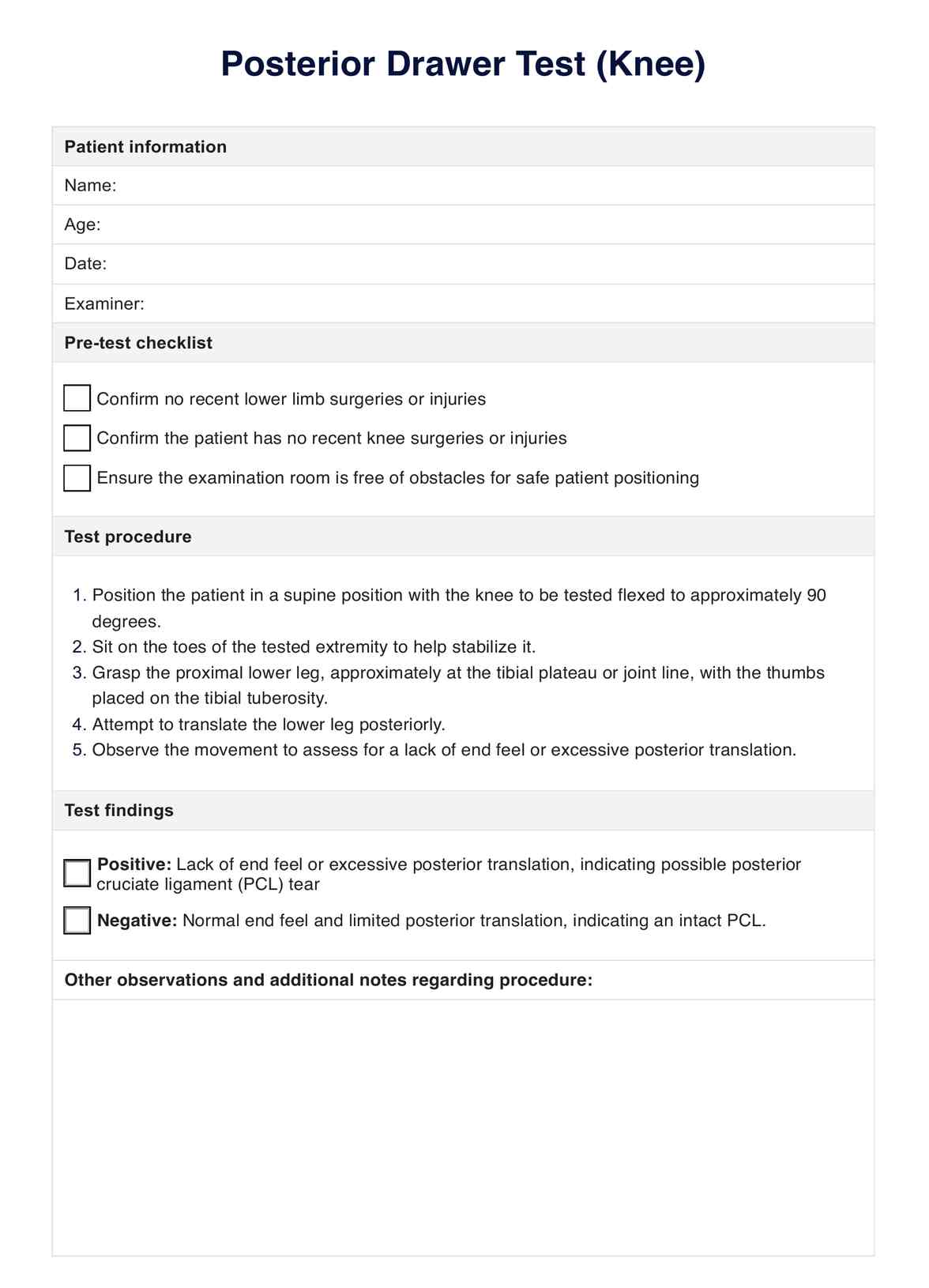Two common tests for posterior cruciate ligament (PCL) injuries are the posterior drawer test and the posterior sag sign. Both tests help assess the stability of the posterior cruciate ligament.

Posterior Drawer Test (Knee)
Use our Posterior Drawer Test (Knee) template to assess PCL injuries accurately and enhance clinical documentation. Learn more about PCL injuries here.
Use Template
Posterior Drawer Test (Knee) Template
Commonly asked questions
The posterior drawer test evaluates the integrity of the posterior cruciate ligament by assessing for excessive posterior movement of the tibia, indicating a potential tear or injury.
A positive posterior drawer test suggests a potential tear or injury to the posterior cruciate ligament, which could lead to knee instability and functional issues.
EHR and practice management software
Get started for free
*No credit card required
Free
$0/usd
Unlimited clients
Telehealth
1GB of storage
Client portal text
Automated billing and online payments











